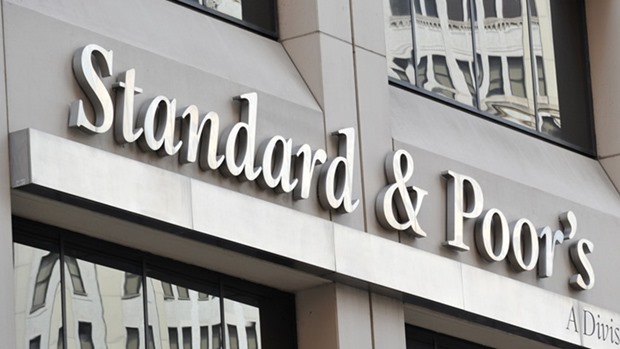GCC government spending on projects may be about $330bn, a S&P report said, and noted the region will be a fertile ground for alternative forms of project finance, favouring the capital markets.
The projects include infrastructure contracts awarded for the 2016-2019 period, the report said.
S&P expects corporate entities’ refinancing needs will remain significant, with $23.6bn in capital market financings — $11.9bn of corporate sukuk and $11.75bn of corporate bonds — coming due between 2017 and 2019.
“Because of the need for infrastructure funding and refinancing on the one hand, and potential Basel IV constraints on the other, we believe the Gulf will be fertile ground for alternative forms of project finance, favouring the capital markets,” S&P said. Still, the repricing of traditional bank loans to corporates has so far been limited due to stiff competition in the sector, partly fuelled by international lenders that are becoming more active in loan deals in the Gulf.
According to various market sources, loans as a proportion of total GCC corporate and infrastructure funding (including loans and bond issuance) increased to represent about 90% of total funding for the first eight months of 2016, up from about 74% in 2013.
“Time will tell whether full adherence to Basel IV by the GCC financial sector will prove to be the tipping point that begins to favour a greater mix of capital market financing for infrastructure,” S&P said.
GCC banks, the report said, traditionally operate with high levels of capital, but S&P expects Basel III to make less of it available for project finance.
Implementation varies across the region and the final form of macro-prudential regulation as such will significantly differ depending on how each national regulator will choose to implement the framework.
Nonetheless, irrespective of the national choices regarding implementation, higher capital requirements will render capital more expensive to deploy while risk weights applicable to different asset classes, including for off-balance exposures through the conversion factor mapping are expected to rise in the region.
Specifically, implementation of the framework could reduce tenors for long-term project financing and the involvement of European financial institutions in long-term lending to the region. In what was probably a response to a reduction in available long-term debt from other regional lenders, French bank Natixis and Abu Dhabi’s First Gulf Bank supported a winning bid last summer for the construction of a solar park in Dubai.
The consortium, which includes Spanish companies Fotowatio Renewable Ventures and Gransolar Group, bid for the third phase of Mohammed Bin Rashid Al Maktoum solar park slated to be operational by 2020, to coincide with World Expo 2020 in Dubai. It was among the lowest bid worldwide.
This, S&P said, raises the question of what assumptions creditors may have made about refinancing costs down the line, and more importantly the overall cost of bank financing on an expected short term-term refinancing basis, compared to a similar bond option.
Tighter capital rules for banks are kicking in at a time when liquidity for Gulf banks is declining on the back of lower oil prices, which is slowing deposit growth. Gulf banks traditionally generate the bulk of their funding from locally raised deposits, the report said.
“Given our expectations for continued weakness in deposit growth, we believe banks will be more selective in their balance sheet allocations, particularly toward longer-tenor lending facilities, and we generally expect the cost of bank borrowing to increase in the GCC)” S&P said.
Business / Business
$330bn govt spend makes GCC fertile ground for alternative forms of project finance




